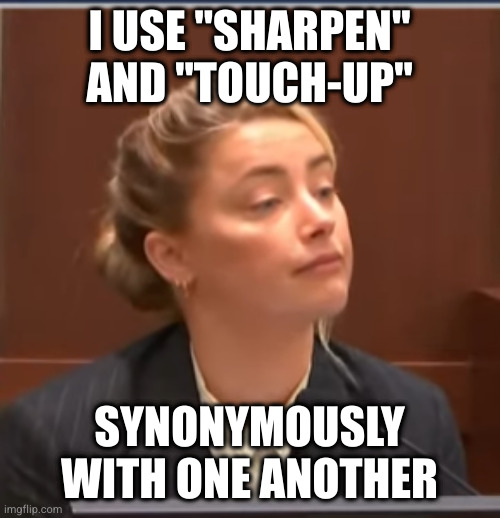Many sources seem to imply that when "touching up" your knives you can use a higher grit stone 1000+.
Hehe.... your question raises a lot of semantic issues... and fair enough!! We use some terms rather broadly and loosely.
Touching up.... I guess a lot of us have a pretty good idea what this means: quickly restoring a higher level of sharpness without a "full" progression. At the same time, it can mean many processes. It could be a few passes on a high grit stone. Or using a loaded strop. Or using a steel or rod. For these methods to work, the condition of the edge has to be in pretty good shape.
So what happens when you aren't "touching up" an edge? Well... it all happens in degrees!! As
@Nemo said: it is all sharpening! If you cant touch up on a 3000 grit stone... perhaps you can sharpen on a 1000 grit stone. If that doesn't work, drop down to a 400....
Which brings us to your next question:
is it necessary to raise a discernable burr? Or is there always a burr no matter how small and I just can't recognize it.
The generally accepted wisdom is that you
will form a burr at
any grit if you are properly abrading the very edge. As people progress through the grits, they are also likely to reduce their sharpening pressure. Combined, it is generally observed that burrs get smaller as you progress through the grit ladder.
How to manage burrs depends on who you are asking, what they are sharpening and what their objectives are! There are burr sharpening methods and there are no-burr sharpening methods. Some steels produce large burrs... others dont. There are people who are very concerned about them... and there are people who aren't. Some people will only take steps to remove a big burr at the lowest grit. Others might take steps to minimise burrs at every grit. So there is no universal answer!
For me personally? I have reasonably low standards for sharpness. As a point of reference, I will be happy with an edge that can cleanly slice paper and roughly shave hair. Neither of these are particularly high bars. So do I achieve this by raising burrs? Yes and mostly no....
And therein lies another semantic trap: define discernible

?! To put us in the same frame of reference... I will define a "discernible burr" as one that you can see with your naked eye. The kind that you might see break in the stone swarf. I
seldom aim to produce these. I reserve these for edge resets which may occur one out of every five or ten sharpening sessions? It really depends on how I am feeling and what my objectives are.
At this point you might ask what happens in the other 10 or so sharpening sessions. You might also ask... can you discern a "non-discernible burr"??? Strictly speaking if you can detect something it is discernible

. I deliberately used a low bar to define "discernible burr". This is because I don't worry about "non-discernible burrs". When sharpening at higher grits, *I* cannot see a burr with my naked eye... but I can still sense them. For example shaving hair might be smoother on one side of the edge (or not possible on the other). Similarly you might find the edge will grip/bite your finger nail more if you till the blade to one side or the other. A tiny burr is still there and I can discern it! I do try to minimise them (e.g. light pressure, higher angle stroping)... but I am not overly concerned about them. At this point the knife is sharp enough for my kitchen needs (majority vegetables). I wont spend a lot of time obsessing about removing them - stropping on a kitchen towel, the carpet or my pants might be sufficient.

























